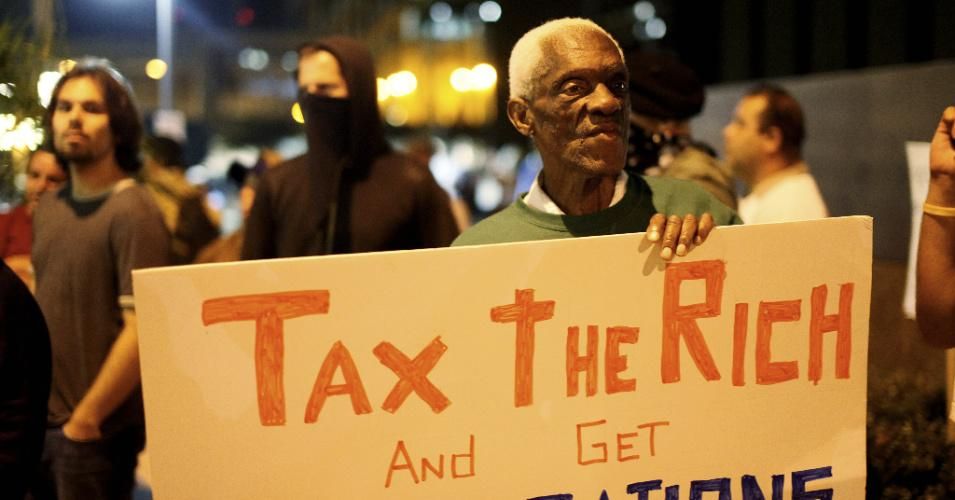
The House Ways and Means Committee missed key opportunities in their initial revenue proposals to fairly pay for President Biden’s Build Back Better plans, especially in addressing wealth inequality.
But the Committee’s suggestions include some powerful inequality-fighting reforms that should be in the final legislation. One of these promising proposals is very similar to a “millionaires surtax” idea that the Institute for Policy Studies and other fair tax advocates have been pushing for the past two years.
As I described the idea here at Inequality.org in September 2019, “The surtax would apply to income earned from work (wages and salaries) and to investment income gained from wealth, including capital gains and dividends. So those with capital income over $2 million would not get a preferential tax rate. The multi-millionaire surtax is easy to understand, simple to apply, and effective — because it covers all kinds of income, making it difficult for the wealthy to avoid. It is laser-focused on the super-rich. Anyone earning below $2 million a year will not pay a dime.”
The millionaires surtax was originally introduced in 2019 and reintroduced in 2021 by Maryland Senator Chris Van Hollen (S 2028) and Virginia Representative Don Beyer (HR 3805). It would institute a 10 percent surtax on the incomes of couples making $2 million or more (top 0.2 percent). The Tax Policy Center estimated it would raise $635 billion over 10 years.
The idea saw further exposure when Presidential candidate Michael Bloomberg proposed a 5 percent surtax on incomes over $5 million.
The Americans for Tax Fairness coalition has coordinated a national campaign that has now put the concept at the center of the federal budget negotiations.
The recently released House Ways and Means plan differs slightly from our original proposal. It would impose a 3 percent surtax on the incomes of ultra-wealthy households making $5 million or more per year, raising an estimated $127 billion over 10 years. It applies to incomes from investments, including trusts. (See section 138206 “Surcharge on High Income Individuals, Trusts and Estates,” on page 652).
Of course, the Holy Grail tax reform would be a total elimination of the preferential treatment of capital gains, taxing income from wealth at the same rates as income from wages. Short of that, a surtax on the incomes of ultra-millionaires is an important foot in the door toward equalizing the treatment of capital and wage income.
The surtax is overwhelmingly popular. According to a poll by Hart Research Associates, 73 percent of voters support a millionaires surtax, with 76 percent support from independents and moderates. Even a majority of Trump voters (57 percent) and Republicans (53 percent) favor the policy. The millionaires surtax legislation has been endorsed by a diverse range of 72 national organizations.
In the coming weeks, Congress will debate the size of the Build Back Better plan and how to pay for it. The millionaires surtax should remain part of that mix and could even be expanded by raising the rate from 3 percent to 10 percent — and lowering the income threshold to $2 million.
While the millionaires surtax does not address the colossal inequalities of wealth, it focuses on taxing income that largely flows from wealth.
See more about the millionaires surtax at the campaign web site created by the Americans for Tax Fairness: www.surtax.org.
This content originally appeared on Common Dreams - Breaking News & Views for the Progressive Community and was authored by Chuck Collins.
Chuck Collins | Radio Free (2021-09-20T20:47:01+00:00) The Simple, Effective Wealthy Surtax We Need. Retrieved from https://www.radiofree.org/2021/09/20/the-simple-effective-wealthy-surtax-we-need/
Please log in to upload a file.
There are no updates yet.
Click the Upload button above to add an update.